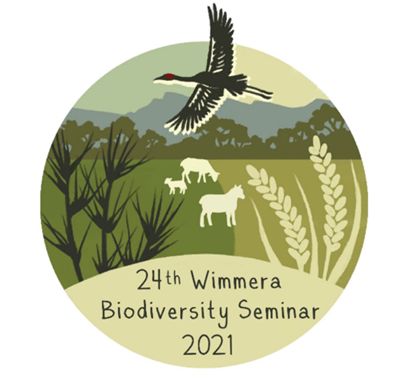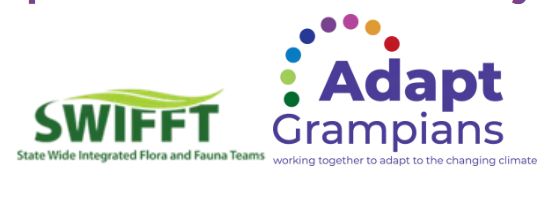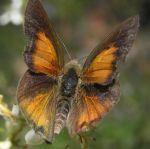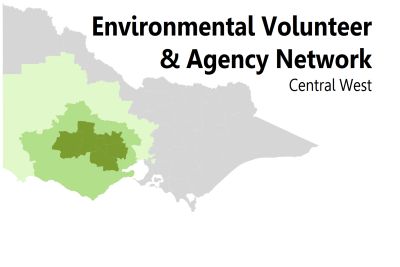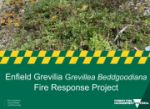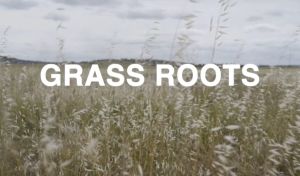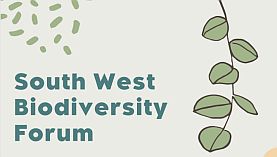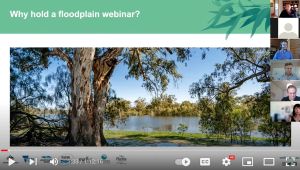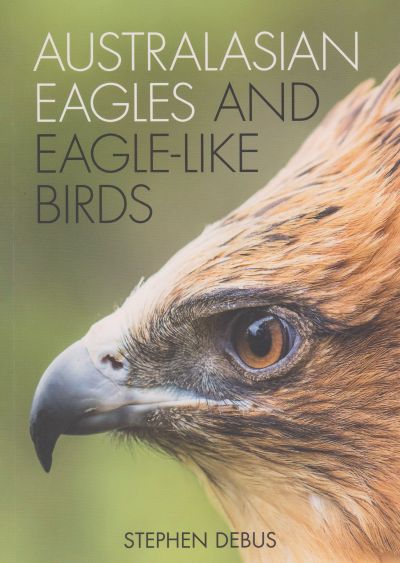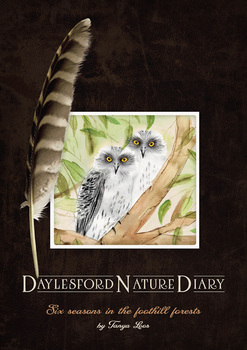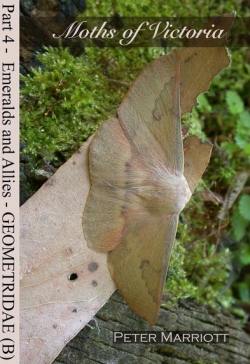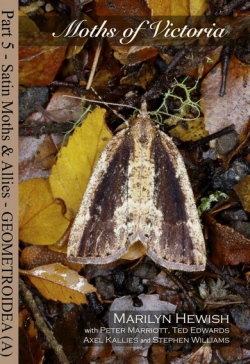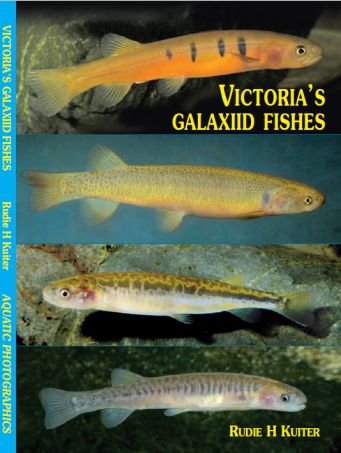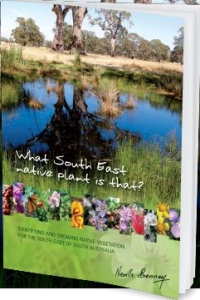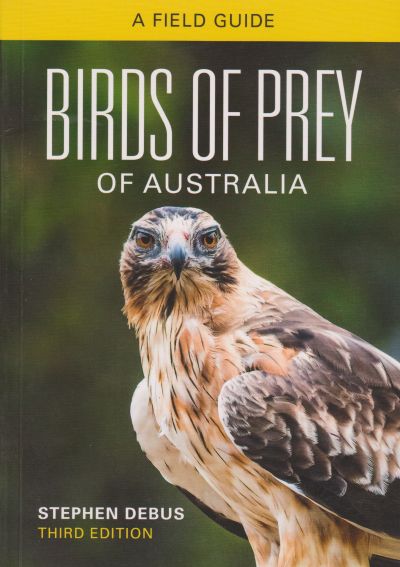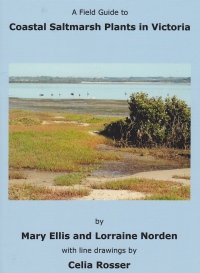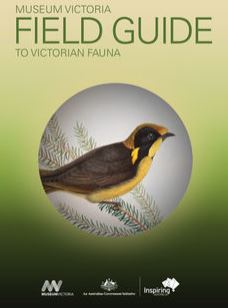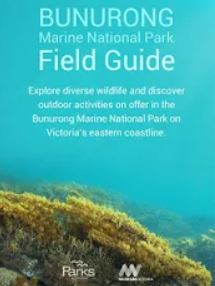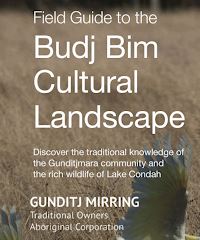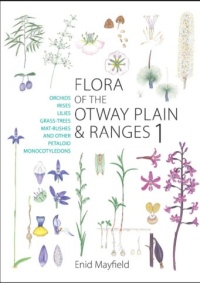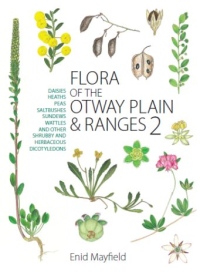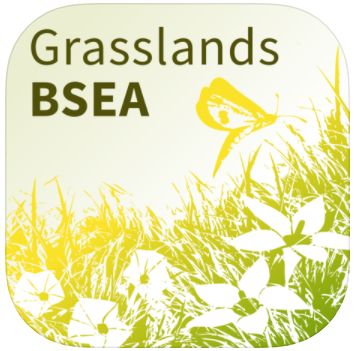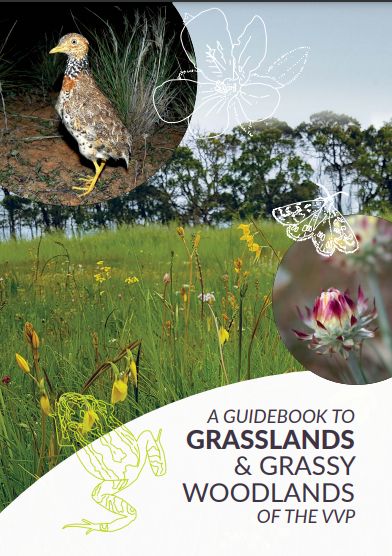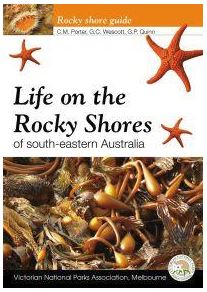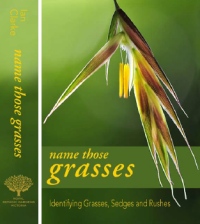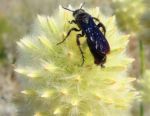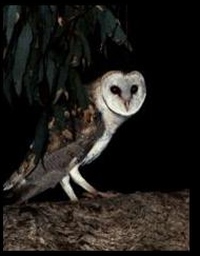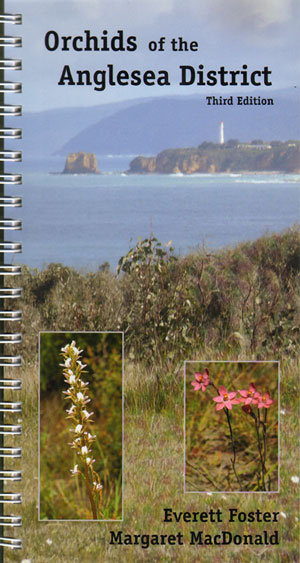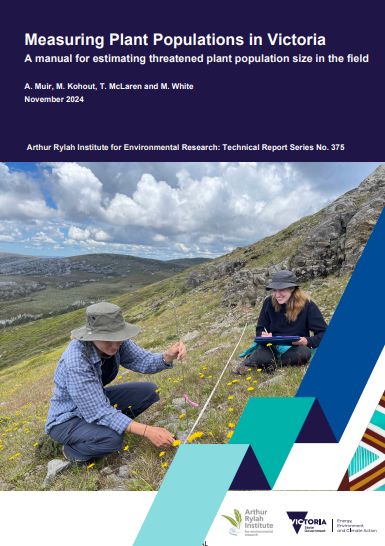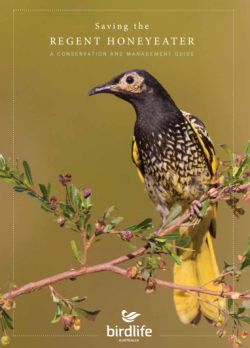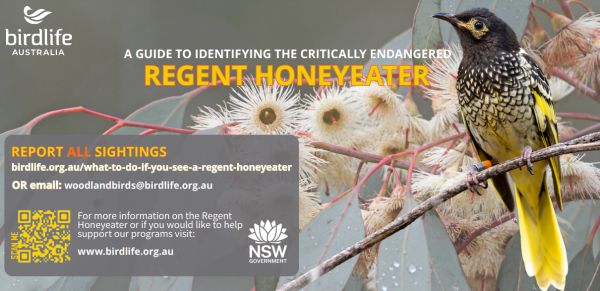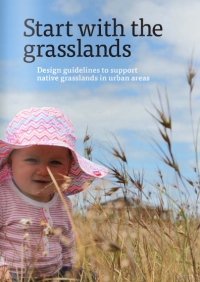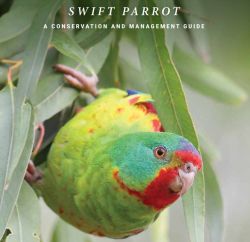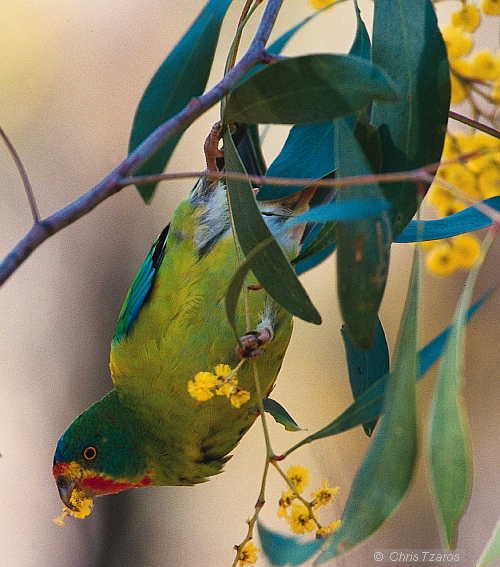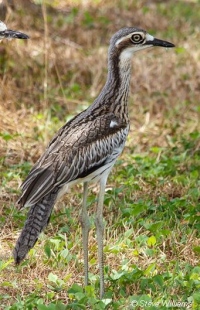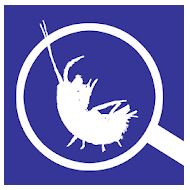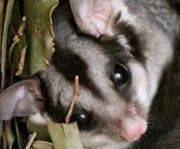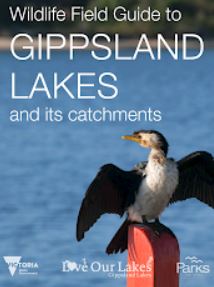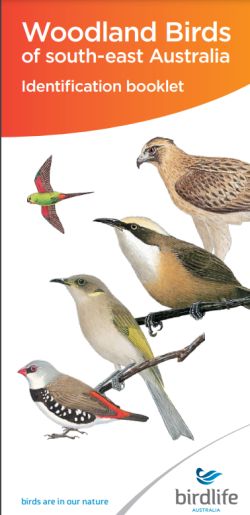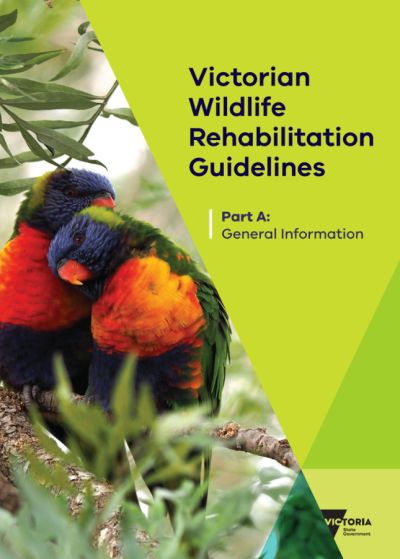Resource library
The SWIFFT resource library contains a range of reports, guides, strategies and planning documents, website links and general information on biodiversity conservation.
Please help share information and resources on SWIFFT. These could be public documents that you are aware of, links to web-based documents or even PDF or document files you would like to share. Contact SWIFFT
- Resource library
- Online data and information repositories
- Citizen science and data collection apps and websites
- Biodiversity and nature conservation websites
- Media content, newsletters and recordings
- Books and journals
- Field guides and brochures
- Reports and documents
- Plans and strategies
- Land for Wildlife notes
- SWIFFT annual reports
- SWIFFT seminar notes
- Zoos Victoria - Fighting Extinction
Online data and information repositories
Arthur Rylah Institute for Environmental Research
Applied ecological research resources and outcomes with an emphasis on plants, animals and biodiversity issues.
The Atlas of Living Australia is a collaborative, national project that aggregates biodiversity data from multiple sources and makes it freely available and usable online. Includes species information profiles, downloadable occurance data, spatial tools, sightings upload tools and citizen science platforms.
A free online public enquiry database that provides taxonomic and biological information on Australian fauna. The database is constantly being updated and expanded with addition of new data sets. At present about 98 per cent of described species are listed in the Australian Faunal Directory.
Bush Blitz is a partnership between the Australian Government, BHP Billiton Sustainable Communities and Earthwatch Australia to document plants and animals in selected properties across Australia.
Environmental Volunteering Opportunities groups - Interactive Map
Explore groups involved in environmental volunteering across Victoria in an interactive map.
EPBC Act Protected Matters Search Tool
Use this search tool to generate a report that will help determine whether matters of national environmental significance or other matters protected by the Environment Protection and Biodiversity Conservation Act 1999 are likely to occur in your area of interest.
EPBC Act Species Profiles and Threats Database (SPRAT)
Provides information about species and ecological communities listed under the Environment Protection and Biodiversity Conservation Act 1999. Provides information on what the species looks like, its population and distribution, habitat, movements, feeding, reproduction and taxonomic comments.
VICFLORA by the Royal Botanic Gardens Victoria is a comprehensive and current online guide to the wild plants of Victoria. Includes plant profiles, identification tools, images and illustrations.
Guide to the frogs of Australia, providing descriptions, distributions, images, breeding calls, and more for every frog in Australia.
Leadbeater's Possum interactive map
A range of Leadbeater's Possum spatial information is available on the Leadbeater's Possum Interactive Map. This user-friendly tool provides public access to the most up-to-date Leadbeater's Possum spatial information
NatureKit is the Department of Environment, Land, Water and Planning's biodiversity web mapping and reporting tool that has been developed to replace Biodiversity Interactive Map (BIM).
River Detectives is an education program initiative of Catchment Management Authorities that supports teachers and leaders to get young people connecting to their local waterway.
Terrestrial Ecosystem Research Network (TERN)
TERN was established in late 2009 as Australia’s first Commonwealth Government NCRIS grant-funded research infrastructure to deliver a national terrestrial ecosystem observatory providing standardised and integrated measures of changes in Australia’s land-based ecosystem biodiversity. The goal of TERN is to provide open access for researchers to Australia’s land-based ecosystem monitoring infrastructure, data and research tools and thus contribute to a broader understanding and long-term sustainable management of Australia’s ecosystems.
Threatened Species Advisory Lists for Victoria
Non-statutory advisory lists of rare and or threatened flora and fauna in Victoria. Threatened Speces Advisory Lists were maintained by the Department of Environment, Land, Water and Planning but were replaced with the FFG Threatened Species List in 2021.
Threatened Species Recovery Hub
National threatened species research network supported by the National Environmental Science Program. Key research themes include controlling threats, flora and fauna at high risk of extinction, monitoring and management, reintroductions and refugia, threatened species policy, and social and economic aspects of threatened species recovery.
Valuing Urban Wetlands interactive map
Valuing Urban Wetlands uses Citizen Science to demonstrate the relative value of wetlands in the Greater Melbourne region. Includes Latham's Snipe records and waterbird lists for selected wetlands.
The Victorian Biodiversity Atlas (VBA) is the collated information of flora and fauna sightings across Victoria. The VBA is managed by the Department of Energy, Environment and Climate Action (DEECA).
VicVeg Online aims to help you to read the landscape and understand the native vegetation of your area and on your place as well as how to give it a helping hand
Visualising Victoria's Biodiversity
Visualising Victoria's Biodiversity (VVB) is a map portal for accessing and sharing spatial information on Victoria's environmental values, conservation activities and research.
Web app
Platform for storing, analysing, visualising, synthesising and sharing animal presence and movement information.
Citizen science and data collection apps and websites
ARI AI software models for fauna detection
The Arthur Rylah Institute (ARI) Victoria, announced in September 2025 the development of two world-leading AI software models:
· ARI Sound Analyser (ARISA) modelling software that can rapidly identify animal calls of birds, frogs, bats and other mammal species in enormous datasets of real-world audio recordings.
· ARI Ecoacoustic Listener (ARIEL) validation software providing confirmation of AI detections.
The new technology has been successfully tested and used to uncover previously difficult to detect species and is now available for further collaboration and investment.
Further details from DEECA Wildlife call recognition using artificial intelligence
The Atlas of Living Australia is a collaborative, national project that aggregates biodiversity data from multiple sources and makes it freely available and usable online. Includes species information profiles, downloadable occurance data, spatial tools, sightings upload tools and citizen science platforms.
Web app, Android app, iOS app
Birdlife Australia citizen science event. Australia wide bird count surveys.
Australian Citizen Science Association
Website
The Australian Citizen Science Association (ACSA) was formed to advance citizen science through the sharing of knowledge, collaboration, capacity building and advocacy. ACSA is a member-based community that supports, informs and develops citizen science. ACSA membership is open to citizen science project managers, volunteers or anyone with an interest in citizen science.
Web app, Android app, iOS app
A Birdlife Australia platform. Record, contribute and viewbird sightings and survey data.
Web app
Managed by the Museum of Victoria and the Atlas of Living Austalia, Bowerbird is a socially networked, web-based, community, biodiversity workspace for Australia. Submit biological sightings and images for idenitification, discussion and sharing to conservation networks and recognised databases.
Website, Android app, iOS app
Contribute species data relating to climate change.
Web app, Android app, iOS app
International bird observation and checklist citizen science program.
iOS app
EchidnaCSI is a citizen science project aimed at understanding more about Echidnas through the public's help.
Web app
Eremaea Birdlines is a service provided by Birdlife Australia for recording unusual and interesting observations of wild birds in Australia.
Web app
EstuaryWatch is a citizen science program for monitoring estuary health.
Web app, Android app, iOS app
Map feral animal sightings, impacts and control actions. Includes RabbitScan, WildDogScan, FeralCatScan, FoxScan, FeralPigScan, ToadScan, MynaScan, MouseAlert, CamelScan, FeralGoatScan, FeralFishScan, StarlingScan, DeerScan (coming)
Android app, iOS app
Melbourne Water community frog monitoring program. Recording of frog calls.
Web app, Android app, iOS appp
Discover which frogs live around you and help count Australia's frogs.
Web app, Andriod app, iOS app
International biodiversity observation and citizen science platform.
Web app
Goulburn Broken Catchment Management Authority bird, fish, reptile and frog observation program.
Website, Android app, iOS app
National citizen science event to collect waterbug monitoring data from waterways and wetlands
Web app, Android app, iOS app
The North Central CMA's NatureBlitz app is a citizen science monitoring tool that allows the community to collect important information about our region's biodiversity.
Web app
Citizen science database for individuals and groups to document and share information about their local environment.
Volunteer program
A Victorian National Parks Association program. Started in 2007, NatureWatch trains community volunteers to collect important information about Victoria's animals and plants. Projects include Communities Listening for Nature, Caught on Camera, Grasstree Monitoring and Grassland Threatened Species.
The ParkConnect web site has lists of available volunteer activities across Victoria. Parks Victoria volunteers help to protect, maintain and restore Victoria’s unique and special places.
Redmap (Range Extension Database & Mapping project) invites the Australian community to spot, log and map marine species that are uncommon in Australia, or along particular parts of our coast.
Volunteer program
A Victorian National Parks Association program. Marine citizen science program that trains pople to collect important information about fish, invertebrates and algae at dive locations across Victoria. Projects include Great Victorian Fish Count, Adopt a Sponge, PlateWatch, OysterWatch, Sea Slug Census and ReefCam
Science for all is an organisation which exists to facilitate the learning, sharing and creation of knowledge. We enable people to share knowledge and ideas, use the scientific method to create new knowledge and support more people to get involved in shaping the future of human knowledge. Projects include:
- Campfires and Science
- How to use environmental DNA to detect species
- Standardised Data on Initiatives (STARDIT) is a proposed way of sharing data about ‘research’, ‘interventions’, ‘projects.
Threatened Species Conservancy
The Threatened Species Conservancy is an independent not-for-profit organisation helping Australia’s threatened plants and animals to thrive.
The Threatened Species Conservancy undertakes planning and the implementation of recovery programs for the nation’s threatened plants and animals.
The Conservancy fosters connections between people and the natural world through targeted on-ground actions, citizen science and community engagement.
Valuing Urban Wetlands interactive map
Valuing Urban Wetlands uses Citizen Science to demonstrate the relative value of wetlands in the Greater Melbourne region. Includes Latham's Snipe records and waterbird lists for selected wetlands.
Volunteer program
Become a citizen scientist and assist researchers by looking for animals in wilderness photos taken by automated cameras around Australia.
Web app
WomSAT is a new resource for communities to record sightings of wombats across the country.
Web app
xeno-canto is a website dedicated to sharing bird sounds from all over the world.
Web app
Platform for storing, analysing, visualising, synthesising and sharing animal presence and movement information.
Biodiversity and nature conservation websites
The website promotes the indigenous heritage and natural resources of the Moorabool River and surrounding regions. The public can access information about places of interest relating to cultural heritage and recreational sites.
Observations of flora, fauna and landscape in central Victoria, Authored by Geoff Park.
Raakajlim - Mallee Conservation
Happenings on a conservation property in the Mallee of north-west Victoria. “Raakajlim” is a 470-hectare private property, managed entirely for conservation since 2001. View the flora and fauna of this beautiful area.
This website explores ways to keep our natural ecology healthy and thriving for future generations, Authored by Stephen Murphy.
Tanya Loos - Field naturalist and writer
Natural history writing on the flora and fauna of the Wombat Forest.
Web site with articles on Conservation
A range of articles from leading academics and scientists with news, research and ideas on Biodiversity and related topics such as birds, climate change, ecology, endangered species, environment, extinction, forests and wildlife conservation.
Zoos Victoria - Fighting Extinction
Zoos Victoria is fighting to save wildlife from extinction and ensure a world full of wildlife for our next generation.
Media content, newsletters and recordings
23rd Wimmera Biodiversity Seminars
The 23rd Wimmera Biodiversity Seminar was held over 5 Thursday's from 3 September to 1 October 2020. A recording for each of the five seminars are available to view.
24th Wimmera Biodiversity Seminar
The 24th Wimmera Biodiversity Seminar was held over 5 Thursday's from 2nd to 30th September 2021. Recordings for each of the five seminars are available to view.
Bat Conservation - recordings of presentations
View recordings of presentations to SWIFFT Seminar on 21 March 2024 - Bat Conservation.
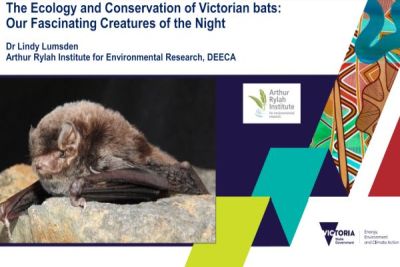
The Ecology and Conservation of Victorian bats – Our Fascinating Creatures of the Night - Dr Lindy Lumsden - Arthur Rylah Institute for Environmental Research
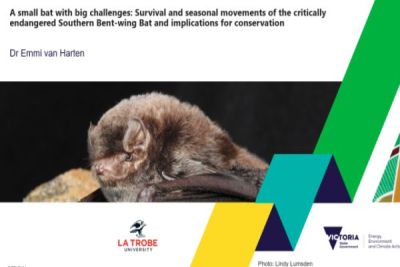
A small bat with big challenges: Survival and seasonal movements of the critically endangered Southern Bent-wing Bat and implications for conservation - Dr Emmi van Harten – DEECA
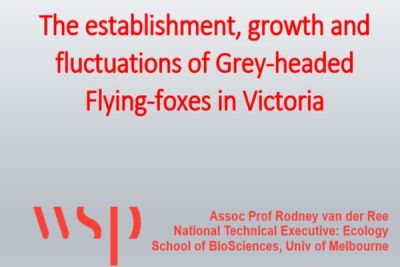
The establishment, growth and fluctuations of Grey-headed Flying-foxes in Victoria: challenges for the community and managers - Dr Rodney van der Ree - Assoc Prof, National Technical Executive: Ecology School of BioSciences, University of Melbourne
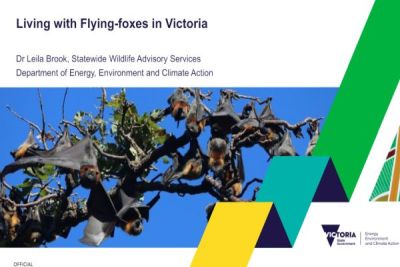
Living with flying-foxes in Victoria - Dr Leila Brook - Statewide Wildlife Advisory Services, Department of Energy, Environment and Climate Action (DEECA)
Biological Control Workshop - a powerful weed management tool explained
Biological Control Workshop - a powerful weed management tool
Watch the webinar recorded on Tuesday 6 October 2020 10 am - 11:30 am
This recorded webinar is a great resource to learn how biological control provides a reliable, cost effective and well researched method of managing some of Victoria's most environmentally destructive weeds. Presenters:
- Dr Raelene Kwong and Greg Lefoe, Senior Research Scientists from Agriculture Victoria’s Research Division explain the ins and outs of what is involved with biocontrol and how you can be involved in your patch.
- Lee Mead, President of the Tarrangower Cactus Control Group showcases an exciting community case study of the use of biological control on Wheel cactus (Opuntia robusta) in north central Victoria.
The Department, Environment, Land, Water and Planning (DELWP), Natural Environment Programs team was proud to host the Loddon Mallee event for the Connecting Communities series. This event was proudly supported by DELWP’s statewide Weeds at the Early Stage of Invasion (WESI) project, Connecting Country and the Weeds Society of Victoria.
Climate Adaptation and Biodiversity in Victoria
The preservation of biodiversity values and enhancement of environmental resilience is of vital importance for the function of ecosystems, persistence of wildlife, public health, agriculture, urban amenity and visitor attraction. Changes to temperature, rainfall, storm and fire patterns associated with climate change are already putting species and ecosystems at risk.
Adapt Grampians together with the State Wide Integrated Flora and Fauna Teams (SWIFFT) held a forum on 22 June 2023 to explore work being done to respond and adapt to these pressures on biodiversity.
View presentations via YouTube:
James Todd – Chief Biodiversity Officer, DEECA
Climate change, adaptation, and biodiversity
Amanda Lamont – Nature Based Resilience
Nature Based Resilience – rethinking disasters
Nathan Wong – DJARRA
DJANDAK Strategy
Adam Miller – Deakin University
Landscape genomics of Gariwerd flora communities
Eltham Copper Butterfly in Northern Victoria
A recording of a presentation on the Eltham Copper Butterfly in Northern Victoria delivered by Elaine Bayes and hosted by Megan Taylor and Annie Hobby, Novemeber 2021. More about the Eltham Copper Butterfly
Environmental Volunteering newsletters
Department of Environment, Land, Water and Planning (2020)
Updates on Environmental Volunteering across Victoria with links to subscribe.
Environmental Volunteers & Agency Network (Central West)
The Environmental Volunteers & Agency Network (Central West) aims to sustainably enable stronger connections between environmental volunteers, groups, agencies, and the community, to achieve our shared goal of caring for nature. More details and view recordings of Events and Caring for Nature Community College.
Recording of webinar held on 15 October 2022 - hosted by the Victorian Environment Friends Network (VEFN) and the Environmental Volunteers and Agency Network - Central West (EVAN). Learn about what motivates young people to becomes involved in environmental volunteering. For more details watch on YouTube.
Environmental Volunteers & Agency Network workshop on Enfield Grevillea
Recording of EVAN workshop held on 1 December 2021. Learn about the Enfield Grevillea (Grevillea bedggoodiana) which is endemic to Enfield State Park and surrounding forested areas about 30km south of Ballarat and DELWP’s initiative to better understand a unique species improve its management.
Forum on roadside burning for community safety and native grasslands. - Recording
This event was organised through the Linear Reserves Project
Presentations
- The value of native grasslands and the role fire plays in enhancing biodiversity and reducing risk to communities - Dr John Morgan, Associate Professor, Department of Ecology, Environment and Evolution, La Trobe University
- Working within current CFA guidelines - Andy Govanstone, Biodiversity Advisor, CFA
- Roadside burning trends in south-west Victoria - Ben Zeeman, Senior Biodiversity Officer, Glenelg Hopkins CMA
- The past, the present, the future - Mark Gubbins, Westmere Group Burning Controller and lamb & beef producer
An extract from ‘Grass Roots’, the feature documentary being made by the Little Projector Company on Australia’s native grasslands. Added 7 March 2023.
Off Track radio program and podcasts
by the ABC
Off Track, with Ann Jones, is an Australian radio show and podcast which combines the relaxing sounds of nature with awesome stories of wildlife and environmental science, all recorded in the outdoors.
Remember the Wild - Community Conservationists
Wonderful stories of community conservation in action captured on film. Features WOTCH:Eyes of the forest, Hindmarsh Landcare Network: Building Desert Biolinks, Friends of Bats and Bushcare: A Future for Flying Foxes, Connecting Country: Safeguarding Woodland Birds and Friends of Brisbane Ranges: Empowering Students and Saving Phascogales.
South West Biodiversity Forum 2021
Recordings of the South West Biodiversity Forum. Tuesday, 23 November 2021 and Thursday, 25 November 2021. This event was supported by the Department of Environment, Land, Water and Planning (DELWP).
The Victorian Murray Floodplain Webinar – restoring the spiritual home of the Basin recorded on 27 October 2021. The Victorian Murray Floodplain Restoration Project (VMFRP) team, in partnership with DELWP, Parks Victoria and hosted by the Mallee CMA. Learn about the values of the Murray Floodplain, changes which have occurred to flows and impacts from climate change. Restoration measures, implementation plan and O&A panel. Speakers from Parks Victoria, Murray Darling Basin Authority, DELWP (Environmental Water) and Mallee CMA.
Webinar recording - A call to heal Australia's lands, seas & waterways
This webinar was held by NRM Regions Australia in response to the Wentworth Group of Concerned Scientist’s Blueprint to Repair Australia’s Landscapes.
The statement's authors aim is to champion a transformative, nation-wide effort to protect and restore Australia’s lands, seas and waterways by scaling up and linking the immense capability and good will we have in natural resource management and Indigenous caring for Country across all regions of Australia.
Speakers at the webinar were:
Kate Andrews - CEO, NRM Regions Australia
Teagan Shields - Arabana Woman and Research Fellow, Curtin University
Mike Grundy - Member, Wentworth Group of Concerned Scientists
Weed Management after Fire Webinar series
After bushfire, our ecosystems are at their most vulnerable to weed invasion. Learn about managing weeds in bushfire affected areas.
View recordings of four webinars held in November- December 2020.
- Overview weed management after fire
- Prioritisation of weeds after fire
- Collaborative projects -weed management after fire
- Weed identification and recording after fire
Woorndoo Community Day - Celebrating restored grasslands
Recording of seminar - Woorndoo Community Day - Celebrating restored grasslands
- The Woorndoo Project – review John Delpratt
- Mapping roadsides for conservation and repair – a case study Lincoln Kern Practical Ecology Pty. Ltd.
- Introduction to native grasslands – a video presentation Ammie Jackson, DELWP Linear Reserves Program
- "Looking to the future - where should we be focusing our efforts for grassy ecosystem conservation and restoration?" Assoc. Prof. John Morgan, Dept. of Ecology, Environment and Evolution, La Trobe University
- “Seed Production: underpinning innovative approaches to restoring species-rich native grasslands.” Dr. Paul Gibson Roy, Manager Ecological Restoration, Kalbar Operations
Books and journals
Australasian eagles and eagle-like birds
Australasian eagles and eagle-like birds
Author: Stephen Debus
This book focuses on:
- Sea Eagles (White bellied Sea Eagle and Stanford’s Sea Eagle)
- Harpy Eagles (New Guinea Harpy Eagle)
- Booted Eagles (Wedge-tailed Eagle, Gurney’s Eagle, Little Eagle and Pygmy Eagle)
- Australian eagle-like hawks (Black-breasted Buzzard, Square-tailed Kite and Red Goshawk).
164 pages with species description, habitat, population, food, social organisation, behavior, voices, breeding and measurements.
CSIRO Publishing 2017 https://www.publish.csiro.au/book/7664/
Daylesford Nature Diary: The seasons in the foothill forests
by Tanya Loos
The Daylesford Nature Diary reintroduces the six seasons for Victoria’s southern foothill forests in all their splendour. It includes a full colour, beautifully illustrated wheel calendar of wall poster size as a reference and guide.
Moths of Victoria Part 5 - Geometridae - Satin moths and allies, Marilyn Hewish
This is the second book of geometrids, adults of the familiar looper caterpillar. They range from small day-flying to robust and intricate patterned creatures of the night. With 180 species and over 700 images this book presents every known Victorian moth in these two groups for the first time. Accompanying disk provides over 380 additional pages with information, biology and distribution for each species.
Published February 2018, Aquatic Photographics
An informative pictorial book on Victoria’s Galaxiid fishes with images collected over 30 years. Many populations of the taxa are no longer found due to rapid changes in their environment. The book outlines threats to these small native fish which are an often overlooked part of Victoria’s biodiversity.
What South Eastern Native Plant is that?
Book on native plants for south eastern South Australia - released March 2010
Author: Neville Bonney
Cost: $45 inc. GST
Contact: Kirsty Heaver, South East Natural Resource Management Board
Order: from the South East Natural Resource Management Board
PO Box 30, Mt Gambier, 5290, South Australia
Phone: 08 87246000
This book will have relevance to many species found in south-west Victoria and the southern boarder area of Victoria and South Australia.
Field guides and brochures
A Field Guide Birds of Prey of Australia
A Field Guide Birds of Prey of Australia by Stephen Debus
204 pages, comprising a Field Guide covering 26 species; description, diagrams and images plus a Handbook with detailed information on species characteristics, distribution, food and hunting, behavior, breeding, threats and conservation.
CSIRO Publishing 2019 https://www.publish.csiro.au/book/7863/
A Field Guide to Saltmarsh Plants in Victoria
by Mary Ellis, Lorraine Norden with illustrations by renowned artist Celia Rosser.
This 50 page field guide provides descriptions of the most commonly found saltmarsh plants. It outlines the importance of Victoria's saltmarsh wetlands and helps to raise community awareness and education of the role that saltmarsh plants play in the ecosystem.
This book will of great value to many people and assist with the ongoing recognition and protection of saltmarshs.
The book can be purchased by e-mailing South Gippsland Conservation Society shop@sgcs.org.au and arranging for copies $29 each.
Direct Deposit Payments to;
BSB: 633 000
Account: 152103768
Bunurong Environment Centre
Or by E-mailing Pauline Taylor, Shop Manager Bunurong Environment Centre, South Gippsland Conservation Society
PO Box 60 Inverloch Vic 3996, Tel/Fax: (03)56743738
website: www.sgcs.org.au
A Field Guide to Victorian Fauna
by Museums Victoria
Android app, iOS app
Available for both Apple and Android devices, the app holds descriptions of over 950 species, including birds, mammals, fishes, reptiles, frogs and invertebrates from terrestrial, freshwater and marine environments.
Bunurong Marine National Park Field Guide app
by Parks Victoria and Museums Victoria
Android app, iOS app
This app presents images and information on over 300 species of marine and coastal animals and plants that can commonly be seen in the park and nearby waters. It also includes park information and activities that may interest visitors. Maps and a gallery of the location, marine life and habitats are provided.
Field Guide to the Budj Bim Cultural Landscape
by Gunditj Mirring Traditional Owners Corporation and Museums Victoria
Android app, iOS app
This app presents descriptions of 250 species found in the Budj Bim Cultural Heritage Landscape, over half with traditional names and information about their cultural significance. It includes birds, fishes, frogs, lizards, snakes, and mammals as well as freshwater, terrestrial and marine invertebrates.
Flora of the Otway Plain and Ranges (Volume 1)
by Enid Mayfield
Petaloid Monocotyledons (orchids, lilies, irises, grass-trees, mat-rushes and more)
This area of south-eastern Australia has a rich and exceptionally diverse flora with over 130 orchid species represented in this volume.
Flora of the Otway Plain and Ranges (Volume 2)
by Enid Mayfield
Daisies, Heaths, Peas, Saltbushes, Sundews, Wattles and Other Shrubby and Herbaceous Dicotyledons
This visually superb and informative field guide is the second volume of Flora of the Otway Plain and Ranges, and covers more than 480 species of Daisies, Heaths, Peas, Saltbushes,Sundews, Wattles and other shrubby and herbaceous Dicotyledons. The illustrated family key is unique and covers 75 families and over 200 genera. Each species is illustrated and labels provide a clear key to identification for botanists and amateurs alike.
The Otway region of Victoria, with its temperate rainforests, mountain ash forests,heathlands, plains and coastal dunes, has an extraordinarily rich and diverse flora.
Grasslands - Biodiversity Of SE Australia
iOS app Free
Grasslands: Biodiversity of south-eastern Australia aims to build awareness and appreciation of the unique biodiversity of south-eastern Australia’s endangered temperate native grasslands. It contains information on the grassland communities, localities where you can experience them and a comprehensive field guide with images of the plant and animal species that live in them.
Guidebook to Grasslands & Grassy Woodlands of the Victorian Volcanic Plains
Produced by Corangamite CMA and partners. This guide is designed to support land holders, managers and the wider community to maintain and improve the unique flora and fauna of our volcanic plains grasslands and grassy woodlands.
The guidebook includes:
- Why grasslands are important
- What grassy communities look like
- Images of the native flora and fauna of the grasses and grassy woodlands on the Volcanic Plains
- Grassy and grassy woodland habitats
- Aboriginal cultural heritage
- Weed invasion
- Management and actions
The guidebook aims to raise awareness and understanding of these unique ecosystems will help ensure that they are protected and restored for future generations.
Life on the Rocky Shores of south-eastern Australia
by CM Portern GC Wescott and GP Quinn
This indispensable guide includes colour photographs, descriptions and ecological notes for 96 of the more common animals and plants found on rocky shores in south-eastern Australia.
Name those grasses (identifying grasses, sedges and rushes)
by Ian Clarke
An extensively illustrated book explaining:
- The structure of Grasses and several similar groups
- The descriptive terminology
- The process of identification.
Published November 2015 by: Royal Botanic Gardens Victoria, Birdwood Avenue, Melbourne 3004.
29-01-2016
Natural Temperate Grassland Species of the Victorian Volcanic Plain
Grassland Species of the Victorian Volcanic Plain - Field guide
10-11-2021
Nightlife of Australia South-eastern Forests
by Ed McNabb
This is a CD that has night calls for 53 species of nocturnal birds and mammals. For more information and order from Ninox pursuites.
Orchids of the Anglesea District. A Field Guide (second edition)
by Everett Foster and Margaret MacDonald
Ph: (03)52631085
Measuring Plant Populations in Victoria - A manual for estimating threatened plant population size in the field. Produced by Arthur Rylah Institute for Environmental Research: Technical Report Series No. 375 November 2024.
A step by step guide for undertaking the monitoring of plant populations, designed for citizen scientists and non-specialists but is still applicable to anyone with capacity to collect plant monitoring data useful for biodiversity conservation.
Regent Honeyeater Identification Guide
A guide to help identify the Critically endangered Regent Honeyeater and how to report sightings.
Start with the grasslands - Design guidelines to support native grasslands in urban areas
by Adrian Marshall
Victoria's urban grasslands are endangered. The Victorian National Parks Association, with support from the Australian Institute of Landscape Architects, has been developing design guidelines to support native grasslands in urban areas. Chapters include;
- Seven principles for grassland design
- From planning to maintenance
- Planning guidelines
- Design guidelines
- Typical cross-section
- Guidelines for transition to construction
- Case studies
Swift Parrots of Muckleford DVD
The DVD was funded by The Norman Wettenhall Foundation & The Melliodora Fund. The DVD runs for 25 minutes and features Chris Tzaros from Birds Australia, The aim of the DVD is to help people to identify Swifties by sight and by call. There is also some rare footage of their feeding habits at Muckleford.If anyone is interested in purchasing a copy please contact swiftparrotsofmuckleford@hotmail.com. The DVD is $20
The Glove Box Guide to Understanding and Improving Woodland Ecosystems in the Mid Loddon
by Mid Loddon Sub-Catchment Management Group
This Includes a special feature on the Bush Stone-curlew as a focal species. This Guide is published by the Mid Loddon Sub-Catchment Management Group. PO Box 2197, Bendigo DC 3554.
12-12-2013
by The Code Sharman, The Waterbug Company, Mandy Hall Media, Australian Museum
Android app, iOS app
The Waterbug app helps you identify waterbugs from South-eastern Australia. Use the key to answer questions that help you identify your waterbug, or whizz through speedbug and see if you recognize it.
Use of nest boxes – general fact sheet
This fact sheet prepared by DELWP provides an overview of the use of nest boxes for conservation purposes. It includes design, installation, monitoring and maintenance guidelines.
Wildlife Field Guide app to Gippsland Lakes
Android app, iOS app
This Field Guide app portrays the rich terrestrial, freshwater and marine life found in Gippsland Lakes catchment, in Gippsland, Victoria, Australia. It presents imagery and descriptions of over 250 animal species, representing those commonly encountered and others of special interest. It is only a fraction of the rich wildlife found in the forests, rivers, wetlands and lakes of the catchment.
Woodland birds of SE Australia identification guide
Woodland birds of SE Australia identification guide by Birdlife Australia. This booklet will assist in identifying 104 woodland-dependent and common woodland species of south-eastern Australia. Identification is assisted through key distinguishing features.
11-07-2024
Reports and documents
Current and Future Risks of Cropping Wetlands in Victoria
Casanova M.T. and Casanova A.J. (2016)
This report found wetlands are highly vulnerable to cropping because a large number of their attributes (soil, seed bank, vegetation, invertebrates, vertebrates, water regime, water quality) and processes (germination, establishment, trophic interactions) are sensitive to the physical and chemical disturbances applied in cropping. The approximately 20,000 privately owned wetlands of natural origin are at the highest risk.
Glenelg Ark 2005– 2011: Evidence of Sustained Control of Foxes and Benefits for Native Mammals
Robley, A., Moloney, P. and Neave G. (2016)
Identifying cost-effective recovery actions for a critically endangered species
Research Paper focusing on conservation of the Orange-bellied Parrot: Identifying cost-effective recovery actions for a critically endangered species, Rachel A. Pritchard, Ella L. Kelly, James R. Biggs, Annika N. Everaardt, Richard Loyn, Michael J. L. Magrath, Peter Menkhorst, Carolyn J. Hogg, William L. Geary, 18 November 2021, The Society for Conservation Biology, Conservation Science and Practice journal. Open Access. https://doi.org/10.1111/csp2.546
Optimising conservation translocations of threatened Caladenia
Reiter N and Menz MHM (2022) Optimising conservation translocations of threatened Caladenia (Orchidaceae) by identifying adult microsite and germination niche Australian Journal of Botany, 6 May 2022 doi:10.1071/BT21132
Research paper investigating whether the survival of translocated plants, recruitment and, therefore, cost effectiveness, can be improved by selecting optimal microsites for both adults and seedlings.
Results from this research are directly applicable to 58 endangered Caladenia species in the subgenus Calonema, owing to their shared mycorrhizal association with S. australiana. Furthermore, results are applicable to all plant translocations as understanding germination niche and microhabitat requirements is likely to improve success overall.
Orange-bellied Parrot: A retrospective analysis of winter habitat availability, 1985-2015.
White, M., Menkhorst, P., Griffioen, Green, B., Salkin, O. and Pritchard, R. (2016)
This report found the mainland winter habitat is unlikely to have declined significantly since 1983 in a structural or compositional sense to explain the decline in Orange-bellied Parrot population. The number of individuals counted during coordinated winter surveys has declined from 70-90 individuals in the 1980s (with a peak of 122 in 1983) to fewer than 20 in each year since 2001 and fewer than 10 in the last 5 years.
Significant grassy and herbaceous roadside vegetation in Armstrong Creek and Mt Duneed
Prepared by Phil Hunter BAppSc (PksRec & Herit) Geelong Field Naturalists Club Inc. January 2019
Southern Bent-wing Bat National Recovery Team Annual Progress Report 2021
More about the Southern Bent-wing Bat - National Recovery Team.
Victorian Wildlife Rehabilitation Guidelines
The Victorian Wildlife Rehabilitation Guidelines contains 4 volumes (1. General information, 2. Mammals, 3. Birds, 4. Reptiles & Amphibians). The guidelines are aimed at advancing the standards of caring for sick, injured and orphaned wildlife from rescue, transport, monitoring and care through to release. The guidelines have been developed by the Department of Energy, Environment and Climate Action (DEECA) in partnership with Zoos Victoria. Published 2023.
Plans and strategies
Long-term reintroduction plan for threatened floodplain specialist fish in the Murray Corridor
A recovery plan for the Tri-State Murray NRM Regional Alliance. Nature Glenelg Trust, Victor Harbor, 2024. Funded by the Tri State Murray NRM Regional Alliance and the Native Fish Recovery Strategy.
The Tri-State Alliance comprises; North East, Goulburn Broken, North Central and Mallee Catchment Management Authorities in Victoria, the NSW Murray and Western Local Land Services and Murraylands and Riverland Landscape Board in SA).
This report covers distribution (historic and current), biological information and the future conservation needs of six native fish:
- Murray Hardyhead Craterocephalus fluviatilis
- Southern Purple-spotted Gudgeon Mogurnda adspersa
- Olive Perchlet Ambassis agassizii
- Southern Pygmy Perch Nannoperca australis
- Flathead Galaxias Galaxias rostratus
- Yarra Pygmy Perch Nannoperca obscura
Protecting Victoria's Environment - Biodiversity 2037
Department of Environment, Land, Water and Planning (2017)
Launched in 2017, Protecting Victoria’s Environment – Biodiversity 2037 presents a long-term vision for Victoria’s biodiversity supported by two overarching goals:
- Victorians value nature, and
- Victoria's natural environment is healthy.
Threatened Species Action Plan 2022-2032
The Australian Government Department of Climate Change, Energy, the Environment and Water.
The Threatened Species Action Plan 2022-2032 maps a pathway to protect, manage and restore Australia’s threatened species and important natural places. New focus areas for the Plan include:
- An objective to prevent new extinctions
- An additional 10 threatened species that are at imminent risk of extinction added to the 100 priority species list
- 14 new priority places announced in addition to six islands
- Commitment to protect and conserve more than 30% of Australia’s land mass
- Increased participation of First Nations Peoples in the management and recovery of threatened species and threatened ecological communities
- Contemporary fit for purpose conservation planning approaches.
Victorians Volunteering for Nature: Environmental Volunteering Plan
Department of Environment, Land, Water and Planning (2018)
The Environmental Volunteering Plan is a coordinated and revitalised approach to environmental volunteering that supports and fosters a sustainable, modern, effective and valued environmental volunteering sector in Victoria.
Land for Wildlife notes
Please note that names, roles, contact details and organisational names are not current as these resources date back some years.
26-08-2014
26-08-2014
26-08-2014
26-08-2014
26-08-2014
26-08-2014
26-08-2014
26-08-2014
26-08-2014


